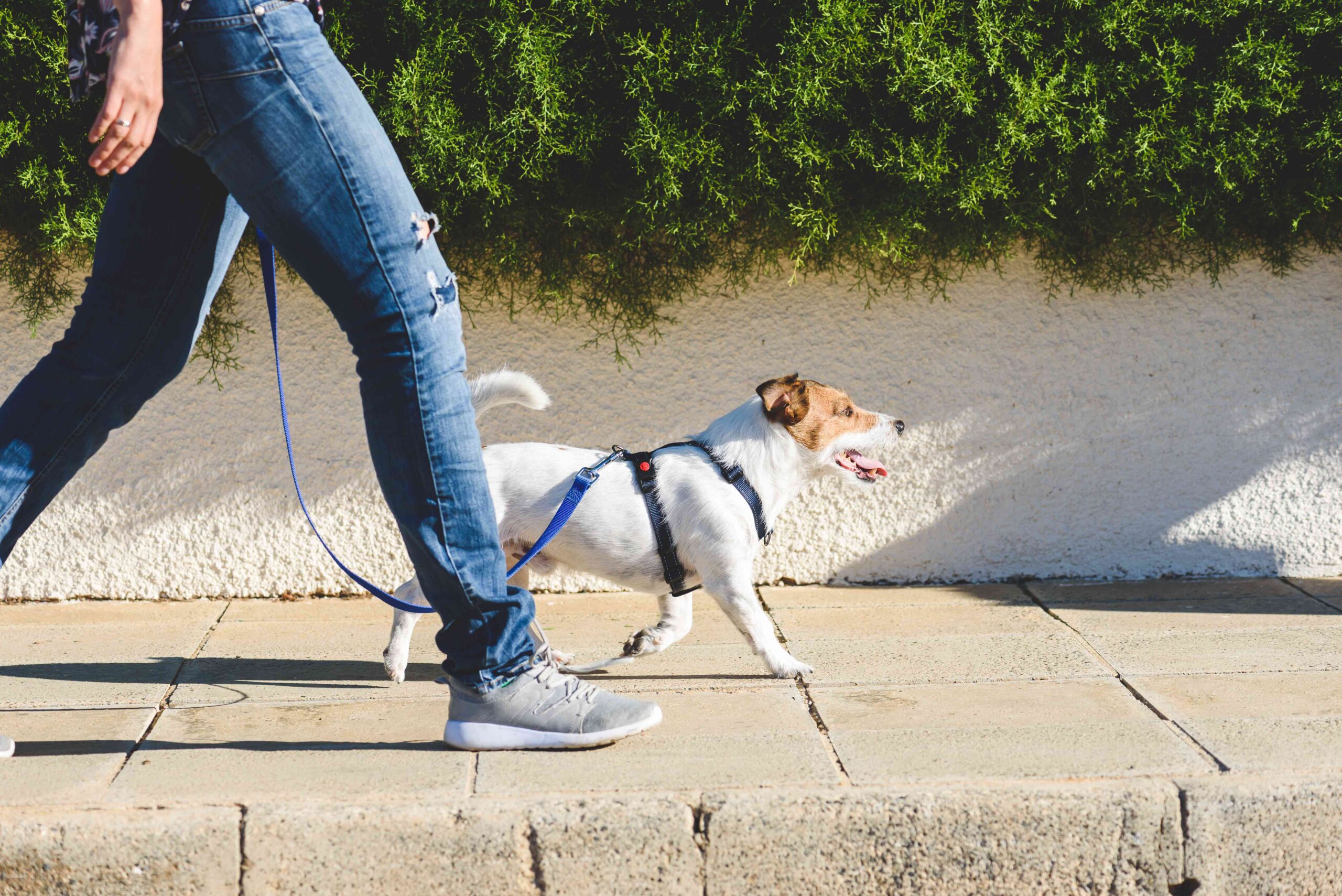Walking your dog should be an enjoyable experience for both of you. But if your dog pulls, lunges, or constantly changes direction, it can quickly turn frustrating or even dangerous. Teaching your dog to walk nicely on a leash—also known as loose leash walking—is a foundational skill that improves safety, strengthens your bond, and makes daily outings stress-free.
Here’s a step-by-step guide to leash training your dog using positive, effective methods.
Why Dogs Pull on the Leash
Dogs naturally walk faster than humans and want to explore their surroundings. They’re not born knowing leash manners. Pulling usually happens because:
- They’re excited to explore
- They’ve learned that pulling gets them where they want faster
- They lack proper leash training
- They feel anxious or reactive toward other dogs, people, or sounds
What You’ll Need
- A sturdy, non-retractable 6-foot leash
- A well-fitting harness or flat collar
- High-value treats (small, soft, and irresistible)
- Patience and consistency
Avoid choke chains or prong collars—these can cause pain, stress, and damage the trust between you and your dog.
Step 1: Start with Focus Training
Before teaching walking skills, your dog should know how to pay attention to you.
Teach “Look at Me”:
- Hold a treat near your face.
- When your dog looks at you, say “Yes!” and reward.
- Practice indoors and in quiet areas first.
Focus is key to redirecting your dog when distractions appear on walks.
Step 2: Practice in a Low-Distraction Area
Start indoors or in a quiet backyard. Let your dog walk beside you and reward them frequently when the leash stays loose.
- Say a cue like “Let’s go!”
- Praise and treat every few steps when they walk at your side
- Keep sessions short and fun
Step 3: Use the “Stop and Go” Method
If your dog starts pulling:
- Stop walking immediately.
- Wait for the leash to go slack (they may turn and look at you).
- Say “Yes!” and resume walking.
This teaches them that pulling doesn’t get them anywhere—only calm walking does.
Step 4: Change Directions Frequently
Keep your dog engaged by making unpredictable turns:
- Turn left or right when they’re too far ahead
- Praise when they follow without tension
- This keeps them mentally focused and closer to you
Step 5: Reward the Right Position
Reward your dog whenever they walk beside you without pulling. Keep treats ready at hip level, not in front of their nose.
You’re reinforcing the idea that being near you brings rewards and calm movement.
Step 6: Increase Distractions Gradually
Once your dog walks calmly in quiet places, slowly increase distractions:
- Try a walk in your neighborhood
- Visit a quiet park
- Practice near people, squirrels, or other dogs (from a distance)
If they start pulling again, return to an easier environment and build back up.
Step 7: Use Positive Reinforcement Only
Never punish your dog for pulling—this causes fear and doesn’t teach the right behavior. Stay patient and reward progress, even if it’s slow.
Common Mistakes to Avoid
- Using a retractable leash (teaches pulling)
- Reinforcing pulling by letting them move forward
- Getting frustrated and yanking the leash
- Forgetting to reward good behavior
When to Consider a No-Pull Harness
Some dogs—especially large, strong, or reactive ones—benefit from a front-clip no-pull harness. These provide more control without discomfort and help discourage lunging or pulling.
Still, training is key—tools are not a substitute for teaching leash manners.
Daily Practice Makes Perfect
Even 5–10 minutes of focused leash training per day can lead to noticeable improvements. Combine walks with training sessions to reinforce behavior in real-world settings.
Final Thoughts: Walks Should Be a Joy, Not a Struggle
Teaching your dog to walk nicely on a leash isn’t just about obedience—it’s about building communication and trust. With consistent, positive training, your walks will go from chaotic to calm. You and your dog will enjoy outings more, and you’ll strengthen your bond every step of the way.
